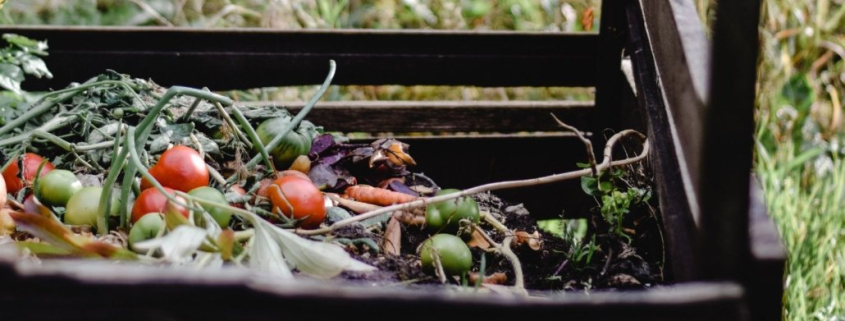
Composting
When organic materials, including kitchen scraps and garden waste are sent to landfills they break down anaerobically and produce the potent greenhouse gas methane.
By composting you avoid this and the finished product is great slow releasing fertilizer and soil improver for your garden. By following a few simple guidelines and having a place for your heap, you can easily get started with composting.
How to Compost
First, decide which method you would like to use – The simplest is to have a compost bin or a heap at the far end of the garden to fill and aerate on occasion, but you might want to learn about other methods, check out these fact sheets put together by the Compost Education Centre:
- Worm composting – In small ventilated bins, red wrigglers (not ordinary earth worms) turn your kitchen scraps into compost. There are a few extra rules to keep your worms happy and productive, but this method is a great for smaller spaces and is a fantastic learning experience for children.
- Trenching – Simply digging in kitchen scraps directly into your garden. By burying scraps at least 30cm deep you should avoid pest problems and the nutrients from the scraps will be right where they are needed, in the root zone.
- Hot composting – With some effort you can create the ideal environment for microbes and your pile will heat up (55-60°C) and create more compost faster.
- Tumbler composting – Tumbler style bins make mixing and aerating your compost easier since you can turn your compost over within the rotating bin. While tumblers are convenient and may have a smaller footprint, they tend to be more expensive and not hold as much material as other bins.

Get yourself set up – Bins can be purchased from gardening centres, home improvement stores or from community composting organizations like the Compost Education Centre in Victoria or the Vancouver Compost Demonstration Centre. You can also create a place for your heap using lumber and fencing material, or things you may already have on hand (check out this post for 35 ideas), or just have a free form pile.
When choosing your bin (or lack of one) you will want to consider the type of materials you plan to compost. For example, if it is just yard waste you plan to compost you don’t necessarily need a solution that is pest proof, but you would want something pest proof if you do plan to include kitchen scraps.
Simple bins, like the one pictured on the left, are designed for new material to be added at the top by removing a pest resistant lid, and for finished compost to be harvested from a door in the bottom.
Making ‘black gold’ for your garden – As a general rule for producing healthy rich compost, alternate layers of ‘brown’ – or carbon rich materials – such as dry leaves, paper, straw, with layers of ‘green’ – or nitrogen rich materials – such as fresh grass clippings and kitchen scraps. You want the ratio of green to brown material to be about equal. Everything should be turned occasionally and kept moist to ensure proper conditions for the microbial breakdown process.

There are a few things that you should avoid putting in your heap so that it won’t attract pests, create odour, spread weeds or result in a compost that would be unhealthy for including in a veggie garden. The table below shows what to compost, coded as as green or brown categories by text colour, and what not to compost.
| Great for compost | Do not compost |
| Fruit and vegetable scraps | Meat/bones |
| Tea bags and coffee grounds | Dairy products |
| Rinsed egg shells | Bread or cooked food |
| Fallen Leaves | Weeds that have gone to seed |
| Grass clippings (fresh/dry) | Weeds that have rhizomes |
| General garden waste (fresh leaves/woody) | Diseased plants |
| Shredded newspaper/cardboard | Cat and dog waste |
| Human or pet hair | |
| Chicken, cow or horse manure | |
| Untreated wood saw dust/chipped | |
| Straw |
Watch and learn – A introductory video about simple backyard composting made by City Farmer.
Alternative Solutions
If you don’t have the desire or space to compost on your property, you can:
Invest in a counter top compost device – If you are really short on space and time, there are now counter top compost devices such as Lomi, which accelerate the compost process through grinding and heating. These devices, which use electricity, can turn kitchen scraps into ‘dirt’ in a few hours.
Use your municipal composting – your green bin. Learn what can go in your green bin and see what happens to the contents of your green bin.
For More Information
Check out the Compost Education Centre in Victoria, their website contains all sorts of helpful educational fact sheets on different methods of composting and other tips for your garden. They also offer workshops.
Visit the Vancouver Compost Demonstration Centre and pick up a cheap backyard compost bin or worm composter
Photo credit: Eva Elijas from Pexels, Nicole Christiansen
